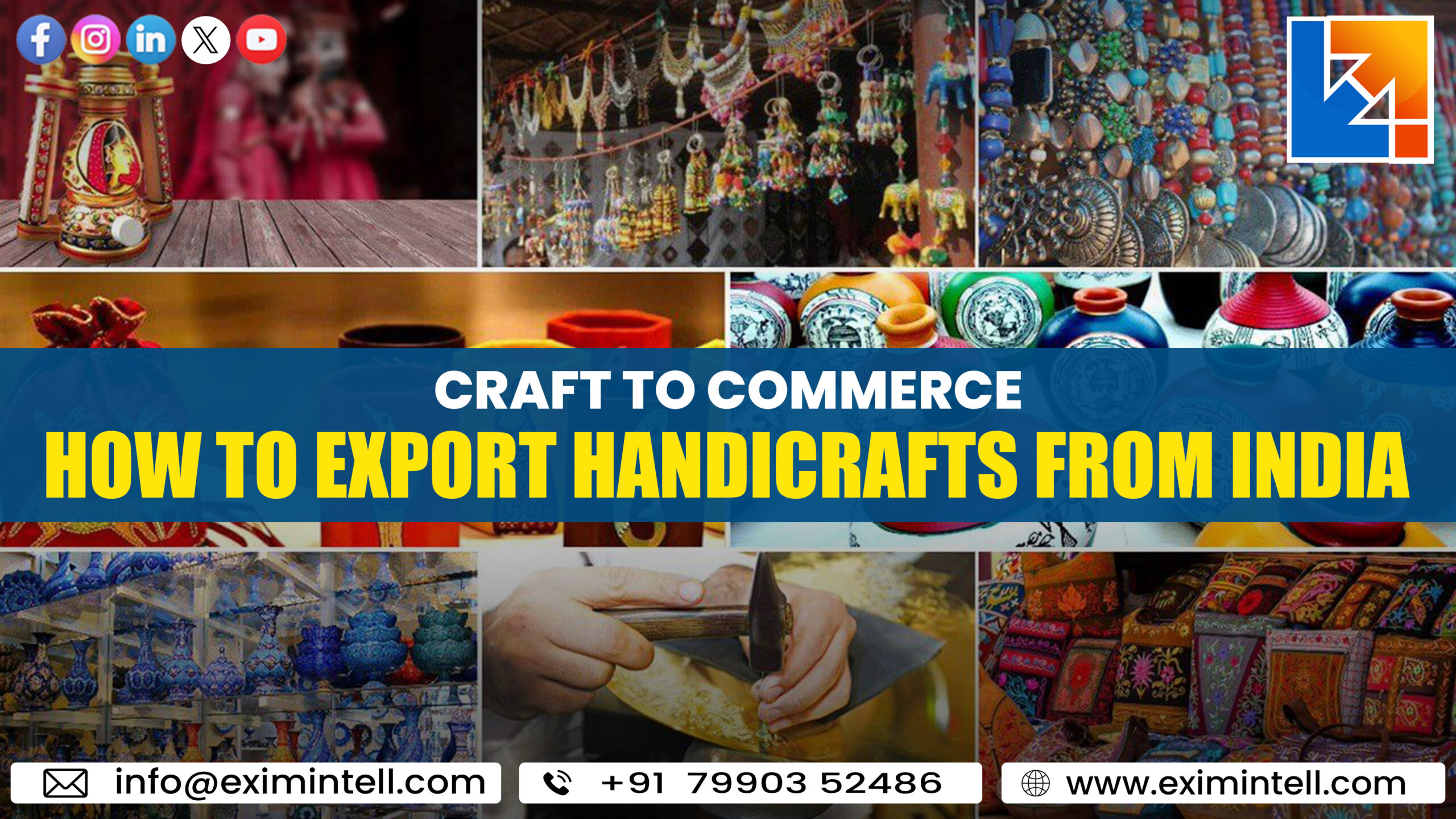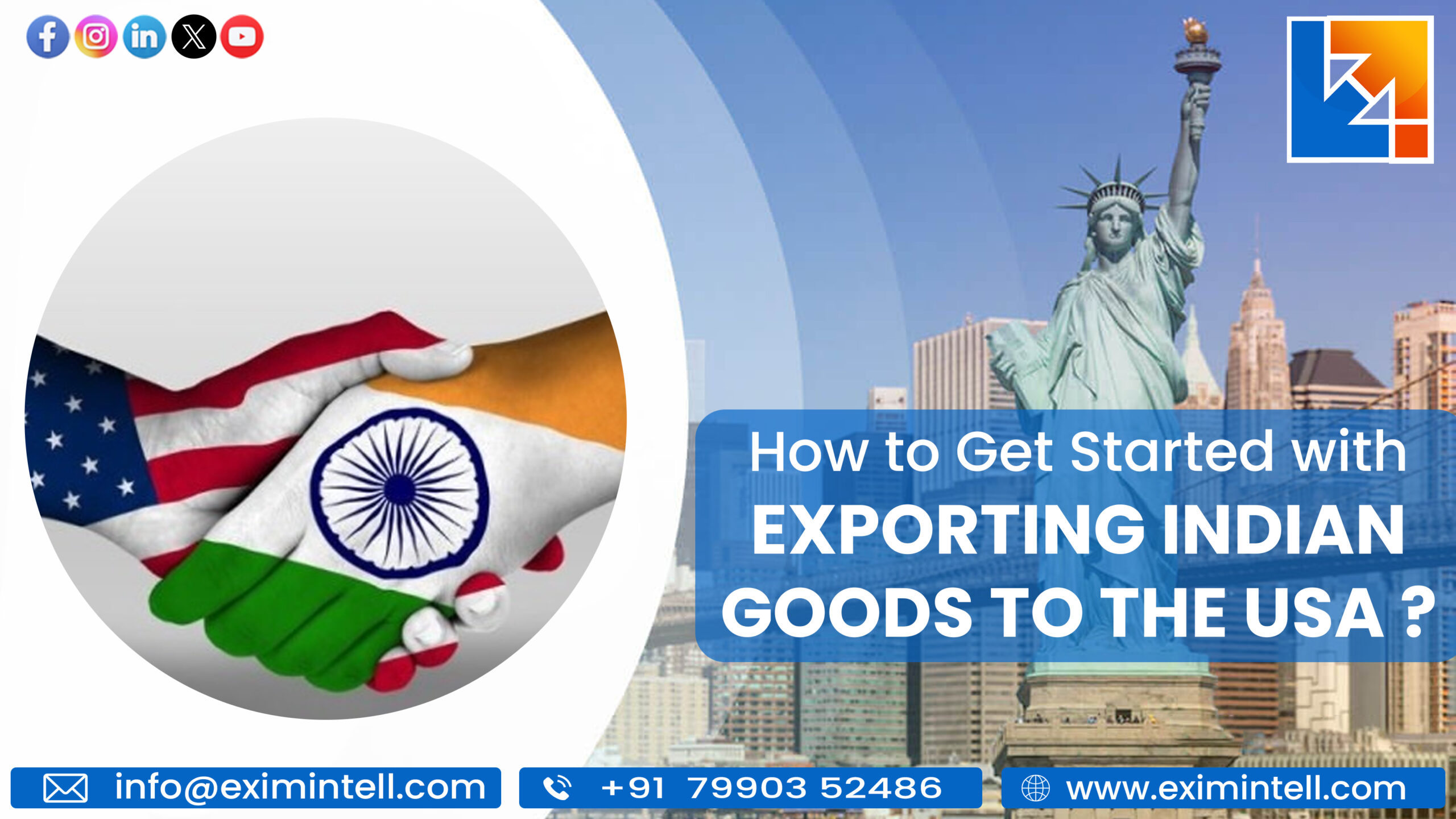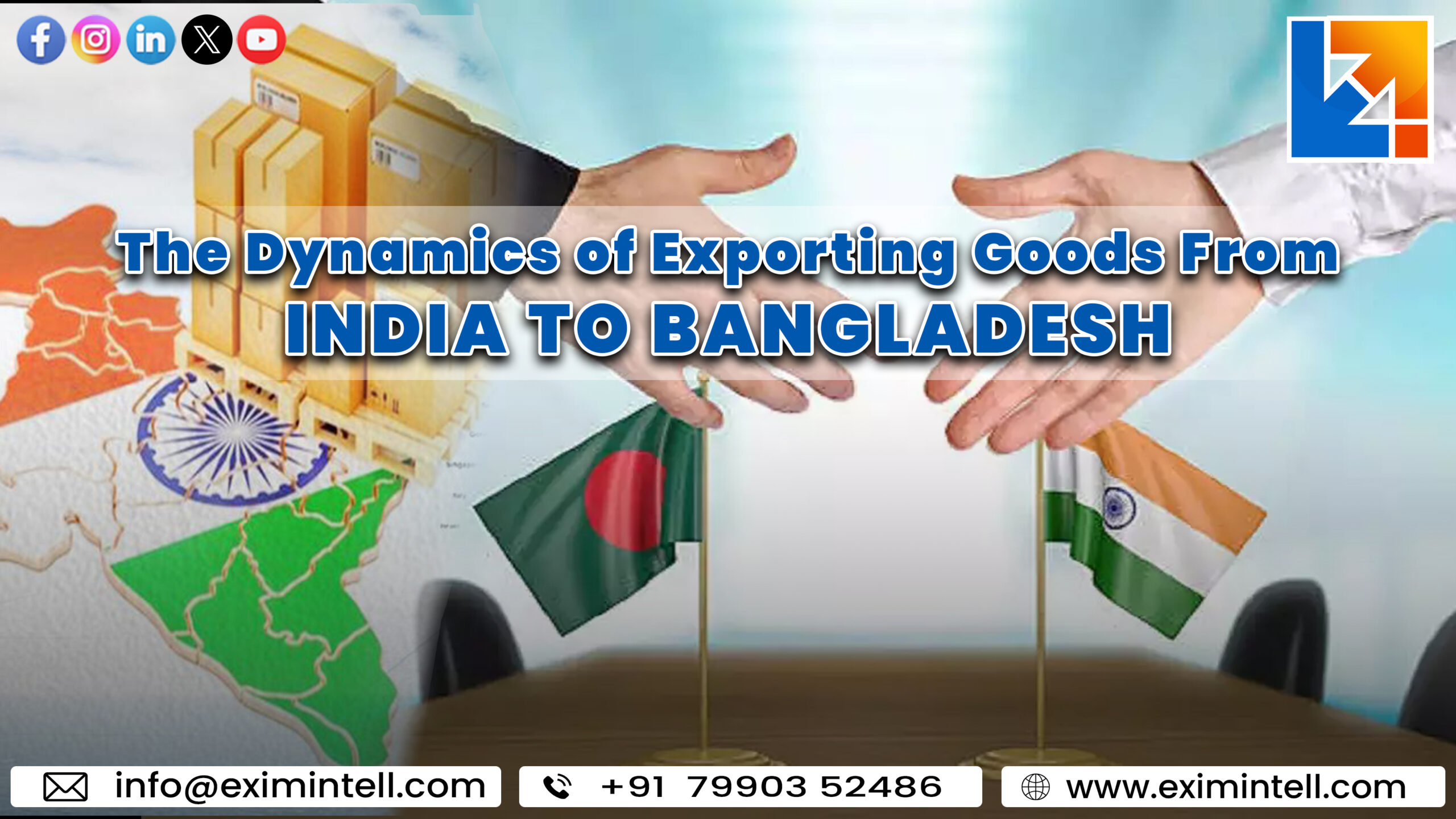Export Handicrafts from India now is more pertinent than ever due to the global shift towards artisanal and eco-friendly goods—a shift that Indian handicrafts are exceptionally well-positioned to capitalize on.
Indian handicrafts are a vibrant expression of the country’s rich heritage and cultural diversity, possessing a timeless appeal that transcends international borders. The intricate artistry, diverse materials, and unique techniques that go into their creation resonate deeply with global consumers who are increasingly seeking authentic and sustainable products.
As the world market is becoming more accessible through digital channels, Indian artisans and traders have the unprecedented opportunity to showcase their crafts to a wider audience, thus opening new avenues of economic growth and cross-cultural exchange.
The impact of exporting these treasures goes far beyond mere commerce; it is a celebration of Indian culture on the world stage. Economically, the export of handicrafts significantly contributes to the livelihoods of artisans and the overall GDP of India, supporting numerous small and medium enterprises across the country.
Culturally, these exports act as ambassadors of Indian traditions, narrating stories of the land’s history, spirituality, and aesthetic sensibilities through each piece. As such, Export Handicrafts from India not only feeds the global appetite for distinctive and meaningful products but also secures a place for India’s artisanal legacy in the tapestry of world culture.
Decoding the Market: Demand for Export Handicrafts from India
Analyzing global market trends for Indian handicrafts.
Deciphering the nuances of the global market is crucial for successfully Export handicrafts from India. A meticulous analysis of global market trends reveals a growing inclination towards handcrafted goods, which are increasingly valued for their ecological footprint, ethical production, and cultural authenticity. These trends underscore the burgeoning demand for goods that tell a story, and Indian handicrafts, with their deep-rooted cultural narratives and artisanal integrity, are perfectly aligned with this shift.
Targeting the right international markets for Export Handicrafts from India.
Identifying the right international markets is another vital component of a successful export strategy. Markets with a strong Indian diaspora, for example, may provide a ready audience with an inherent appreciation for Indian crafts. Similarly, regions where there is a high demand for exotic and luxury décor, or where eco-consciousness is prominent, represent ripe opportunities for Indian handicrafts. Trade fairs, cultural expos, and online marketplaces have also emerged as effective platforms to target discerning global customers.
Case studies: Successful export stories of Indian handicrafts.
Case studies of successful Indian handicraft exports provide invaluable insights and inspiration. From the vibrant handloom fabrics that have found their way into international fashion brands to intricately carved wooden artifacts gracing the shelves of overseas boutiques, the success stories are numerous and diverse.
These narratives often highlight not only the demand but also the strategies employed to capture and retain an international clientele, such as leveraging the power of storytelling to enhance the perceived value of the handicrafts, and utilizing digital marketing to reach a wider audience. Each success story serves as a testament to the global desirability of Indian handicrafts and a blueprint for aspiring exporters in the field.
Regulatory Roadmap for Export Handicrafts from India
Comprehending Export Regulations and compliance for Indian handicrafts.
Navigating the regulatory landscape is an essential step for the legal and successful Export Handicrafts from India. Understanding the export regulations and ensuring compliance are paramount. Exporters must acquaint themselves with the Foreign Trade Policy of India, which outlines the procedures, formalities, and incentives related to exports.
This policy is supplemented by various government schemes aimed at promoting the handicraft sector, such as the Merchandise Exports from India Scheme (MEIS), which provides incentives to offset infrastructural inefficiencies and associated costs.
Documentation and certification for legally exporting handicrafts from India.

Documentation and certification form the backbone of the export process. Exporters need to secure the Registration Cum Membership Certificate (RCMC) from the Export Promotion Council for Handicrafts (EPCH) which enables them to benefit from the council’s support and services.
In addition, crafts need to be certified to meet the standards and requirements of the destination country. Certifications like the Craft Mark, which authenticates the item as genuinely handcrafted, can also add value and trust to the product in international markets.
Export duties and taxes specific to Indian handicrafts.
Export duties and taxes are another critical consideration. While many handicraft items enjoy duty-free status, it’s important to consult the Harmonized System (HS) code that classifies goods for trade and determines the applicable tariffs.
Furthermore, under the Goods and Services Tax (GST) regime, exporters of handicrafts can claim refunds on the input tax paid, which aids in reducing the cost of production and enhances competitiveness in the global market.
Staying informed and leveraging these governmental provisions effectively can significantly streamline the export process and maximize profitability for Indian handicrafts on the international stage.
Crafting Your Export Strategy: Tips for Export Handicrafts from India
Crafting a brand story that resonates globally.
When charting out an export strategy for Indian handicrafts, the narrative around the products becomes as crucial as their quality. Creating a brand story that encapsulates the rich cultural heritage, meticulous craftsmanship, and the unique story behind each piece can significantly resonate with a global audience.
This story not only creates an emotional connection but also gives handicrafts an edge in a competitive marketplace, making them more than just items of utility but symbols of a living tradition.
Online and offline marketing strategies for handicraft export.
Marketing strategies must be adapted for both online and offline channels. Offline, participation in international trade fairs and exhibitions can serve as a launching pad, providing visibility among wholesalers and retailers.
Meanwhile, an online presence, optimized through SEO and leveraging social media, can reach directly to consumers and create a niche market. This dual approach ensures that all bases are covered – reaching out to large buyers as well as end-users who appreciate the value of Indian handicrafts.
E-commerce platforms and digital sales channels for export from India.
In today’s digital age, e-commerce platforms have emerged as pivotal channels for the export of handicrafts from India. Marketplaces like Etsy, Amazon Global Selling, and eBay provide extensive reach and a ready platform for sellers to connect with buyers across the world.
Additionally, creating a dedicated website for your handicraft business with an integrated e-commerce facility can cater to a global audience, offering a curated and immersive shopping experience. Employing these digital sales channels effectively can open up new geographies for exports and create sustainable business growth for Indian handicrafts on a global scale.
Streamlining Export Operations: Logistics of Export Handicrafts from India
Selecting efficient logistics partners for handicraft export.
The logistical aspect of exporting handicrafts from India is a complex operation that demands meticulous planning and the selection of reliable logistics partners. Handicrafts, often being fragile and diverse in shape and size, require specialized packaging solutions to ensure that they arrive at their destinations intact. Therefore, exporters must engage with logistics partners who have proven expertise in handling such unique items and can offer tailor-made packaging solutions that are both secure and cost-effective.
Cost-effective packaging and shipping methods.
Cost-efficiency in shipping is pivotal as it significantly affects the overall price point at which the handicrafts can be offered in the global market. Exploring various shipping methods, negotiating rates, and consolidating shipments can help in achieving this.
It is crucial to strike a balance between speed, cost, and the safety of the goods. Furthermore, exporters need to be adept at managing the complexities of the supply chain, which includes tracking shipments, coordinating with multiple agencies, and ensuring timely delivery.
Managing supply chain challenges in exporting handicrafts from India.
Navigating through these logistics challenges requires a robust operational strategy. This could involve employing technology for real-time tracking, optimizing inventory management to avoid overproduction or stock-outs, and creating contingency plans to address potential disruptions. Understanding and preemptively managing these elements is critical to ensuring that the handicraft export operations from India run smoothly and efficiently, ultimately contributing to customer satisfaction and repeat business.
Financing Your Craft: Financial Avenues for Export Handicrafts from India
Understanding the financial aspects of exporting handicrafts.
Navigating the financial landscape is a crucial step for artisans and businesses looking to Export Handicrafts from India. A comprehensive understanding of the costs involved in production, marketing, logistics, and other overheads is essential for pricing products competitively in the international market.
Alongside this, leveraging the export incentives and subsidies provided by the Indian government can significantly reduce the financial burden and enhance profitability. These incentives are designed to promote Indian crafts globally and may include benefits such as duty drawback schemes, tax exemptions, and subsidized credit facilities.
Leveraging export incentives and subsidies for Indian handicrafts.
Securing the financial aspects also involves negotiating favorable payment terms with international buyers, such as letter of credit or advance payment, to ensure there is minimal risk of non-payment.
Additionally, businesses must be savvy in managing currency exchange rates, as fluctuations can affect the final amount received from overseas transactions. Exporters can use financial tools like forward contracts or options to hedge against adverse movements in foreign exchange rates, thereby securing their expected revenue.
Navigating through payment terms and currency exchange.
Understanding these financial avenues and instruments not only safeguards the business against potential risks but also provides a foundation for sustainable growth and expansion in the competitive landscape of handicraft exports. Building strong relationships with financial institutions, export credit agencies, and utilizing governmental support to the fullest can empower businesses to carve a niche for Indian handicrafts in the global bazaar.
Conclusion
In reflecting upon the intricate tapestry of exporting Indian handicrafts, we see a canvas that Exim Intell, as a seasoned Import-Export consultant, has helped to color with success and sustainability. They stand at the ready, offering not just encouragement but actionable insights for new exporters embarking upon this vibrant path.
Exim Intell’s deep understanding of the market intricacies and strategic nuances furnishes these cultural entrepreneurs with the tools needed to navigate the complex global waters. Their guidance is pivotal in crafting not only a successful business model but also in ensuring that the essence of India’s rich heritage resonates through each unique piece, fostering a sustainable global impact.



















